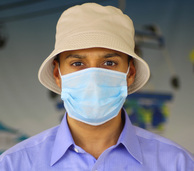|
The 2nd edition of my 1st book on China (The Newcomers Handbook to China), has finally been published and is available in Kindle, and Soft Copy on Amazon and all other book websites.
The last book was published just prior to the Beijing 2008 Olympics. China has changed a lot since then- even though it seems like yesterday! So, now this completely revised and updated second edition of the ‘Newcomer's Handbook Country Guide: China’ focuses on Beijing, Chengdu, Chongqing, Dalian, Guangzhou, Hangzhou, Nanjing, Qingdao, Shanghai, Shenzhen, Suzhou, Tianjin, and Wuxi, with additional information on Macau and Hong Kong. Its 420 pages detail issues relating to culture shock, communication, and what to bring, as well as essentials of Chinese history, housing, transportation, health care, and more. This volume is especially useful for an individual seeking employment in or transferred to China, stressing how to function in China's job market, especially the business and educational sectors. I have got many lovely messages from readers of my first book, and I would like to say a BIG thank you to you all for your advice and your inspiration. Without your advice I would not have been able to exercise more improvements on my 2nd book, and it is only with the assistance of the readers and because of the moderate success of the first book that this 2nd edition is now published. I hope that for those of you going to China for the first time, this will be a valuable tool for your new journey and life in this beautiful country! Today (or yesterday, or tomorrow if you're on the other side of the world!) you can log on and buy 'China: Newcomers Handbook to China 2nd Edition' from Amazon globally. The link is below and thanks again for your help. Let me know what you think, and please feel free to write reviews too. For MEDIA: If you want to write a review or interview me, then you can contact me directly for media interviews through this website. Thank you All the best Navjot The link for the new book is HERE. Press Release can be found at this link: www.pitchengine.com The MEET is a contemporary steakhouse located on the 2nd floor of the Kerry Hotel in Pudong, Shanghai. The restaurant has a rather unusual foyer where dinars can see the meat cuts well placed behind a glass. At first, it appears to look rather like a cross between a glamorized butchers shop, a nightclub, and an upmarket restaurant. It’s no surprise that they do stock the largest selection of meat in the whole of Shanghai, and it’s easy to see why.
The restaurant, with it’s 112 seats which also include a private ‘Masters Table’ for 14 people, shimmers in warm shades of red, burgundy, and brown. It’s a very masculine-looking dining room with leather banquettes and booths, mahogany wood tables and floors, and a sense of warmth. There is a real zest of luxurious settings in place, and it’s a message to welcome the classy white coloured dinars I suppose. It’s thankfully not as noisy as one would imagine it to be (as noisy as steakhouses can be sometimes), but still good enough to create a family gathering atmosphere. The staff seem very proud and attentive, and some of them are even eager to recommend some dishes from the menu for you. The menu, which comes with some cheesy messages like ‘don’t forget to order the side dishes!’, is actually one that delivers more than a hint of your average steakhouse. The first bites of the evening are of ‘very tender grilled baby abalone’, and ‘oysters rockefeller’. The former is a canapé style dish where the abalone is neatly covered with red peppers garnished with lemon juice. While the latter is basically consisting of high quality oysters. These oysters are first class in terms of freshness and taste. A good quality oyster such as the ones provided at the MEET can provide up to 222% of your Recommended Daily Amount (RDA) of Zinc in 100 grams, and would provide just under 1 gram of Omega-3. These two properties alone would be enough to provide a healthy lifestyle if you eat them every day. Nevertheless, it’s still good to get a one-off experience and eat fresh good quality oysters. One thing I began to notice is that the dishes at the MEET are all very colourful, quite perhaps the most colourful I have seen for some time when doing reviews. This can only indicate one or two things. The food at the MEET is absolute fresh and it is brought in from especially organic farms in China. Apart from the meat, most of the other dishes are not imported. Next up was the rich, creamy, flavourful, and colourful in bright yellow ‘Boston lobster bisque’. What made it even more appetising was the shredded minute sprinkling of the parsley and chives. Absolutely wonderful. As close as you can get to Michelin star quality. Sticking with the theme of seafood, we decided to go for the recommended ‘jumbo lump crab cake’. This dish a traditional American dish, and the best jumbo lump crab cakes derive from Maryland. The key to the true flavour of this dish is to not have many breadcrumbs, but have a rich amount of the jumbo lump crab- a larger sized variety of crab known for its rich juicy meat. What really impressed me was the rich bright colour of the dish. The steak was a winner too. We went for the ‘MEET signature Ningaloo tomahawk marbling score 4+’. This massive piece of meat was both delicious and, heavy in weight. The 1.8kg to 2.4kg serves 2-4 people. The steak had been marinated in rich OXO sauce, red wine, hoisin, garlic, and ginger. It, too, was tender, and ridiculously scrumptious. Very impressive. For the side dishes we had the oven roasted tomatoes, potato wedges, and sautéed broccoli. At it’s best, MEET, is very good indeed. You just can’t argue when someone is cooking big platefuls of heartiness at dinner, can you? Located in the futuristic part of Shanghai’s Pudong district, the Kerry Hotel, which belongs to the Shangri-La Hotels and Resorts group, is a fine example of where China’s high lifestyle is heading. With the rather unattractive looking Shanghai Exhibition Centre located right on the hotel’s doorstep, some people may argue that the location is not as glamorous as that of Bund, or even as nostalgic as that of the French Concession. To put it bluntly, it just looks like any other bog standard office building from the outside. There is not a single indication that some architectural genius has mastered this piece of boring concrete. OK, so the outside of the building may be an actual failure in terms of design (well done to the unmentionable architect). Nevertheless, just step inside and you’ll be exposed to a rather different world. Can looks really be that deceptive, I wonder? Let’s find out.
The journey time from the point of arriving at Shanghai’s Pudong airport, where my chauffeur sent by the hotel met me, must have been less than 40 minutes at the most. Upon arriving at the hotel, I was quickly whisked away to my room where I was showcased the hotel’s revolutionary paperless check in procedure using iPads. It saves the approx. 80,000 pieces of paper being used every year , and an innovative initiative by the hotel management to make the future bright as they say. First impressions of the hotel are that this place is spacious, very chic, and feels fresh. There is definitely an air of elegance around as one takes a short walk around the lobby. The cheery on top of the cake has to be the rooms themselves. Split into five categories, the hotel’s 574 well-appointed guestrooms and suites are generously spaced between 42 to 168 square meters. Each rooms provides fascinating views across to the Century Park or the rather unattractive Shanghai Exhibition Centre which looks more like a mini airport when standing at the 31st floor, the hotel’s highest. What really impressed me most was the generous space of the rooms, and the modern amenities that come with it. Take toiletries by L’Occitane, a massive rain forest power-shower the size of two London telephone booths, a Jacuzzi, wireless internet, Nespresso machines, 40-inch flat television screens, iPod docking station, complimentary mini-bar drinks for the first round, and even a notepad and pencil next to your toilet seat (now, you didn’t think they’d have that did you?). Those fortunate enough to fork out the money and stay in any one of the seven floors dedicated to the Clubrooms are rewarded a 24-hour butler service, and with complimentary accesses to the Club Lounge. With delicious snacks, and beverages including the hotel’s own brewed beer, available all day long, this Club Lounge is like no other in the city. There is a potpourri of food on offer, including various pots of yogurt, juices of various kinds, cereals, fruits, alcohol drinks, delicious chocolates, and cheesecakes to die for, and endless cups of tea and coffee. In addition, with things like a ‘wine vending machine’, there is definitely more variety here and it’s a place to savour for as a city getaway from the hustle and bustle of the crowds. Take a drink, forget the outside, and just salute the future of this city. The Club Lounge is not for lunch or dinner, which is why I wandered off to have a drink at the BREW, then dinner at the MEET restaurant, and then had lunch the following day at the COOK restaurant. The latter is perhaps not the place to go to if you are vegan as it specialises in steaks, and meat is the key attraction here. Judging from the display of a ghastly array of meat chops, including a few lambs legs, hanging behind the red lantern lit room I it does make ones stomach churn. It’s look like a cross between a luxury restaurant and a glamorized butchers shop all in one. But, fear not, as the MEET is perhaps one of the best steakhouses you’ll visit in this city (it really is). The Kerry in Pudong is proud to have their own small craft brewery located inside the actual bar called the BREW. The 153-seat BREW is a beehive for city yuppies looking to while away the evening in good company. The bar specialises in brewing their own six signature beers, and a cider. You can either try all six of them if you want. The two favourite ones are the ‘Indian Pale Ale’, and the ‘Pils’. Both of these are also widely available in the Club Lounge, in the mini-bar or in any of the restaurants at the hotel. On the other hand, the COOK is a flamboyant hall made up of open kitchens that highlights the best dies from around the world. Indian, Malaysian, Japanese, Chinese, Western…vegan, you name it and it’s all there. The best thing to do is to purchase a card from the counter, and try bits and bobs of everything. The cost will then automatically be added to your hotel room bill. After all that heavy food, I decided to wander off to the gym to have a look what’s on offer. I was in for a surprise. I was expecting a small averagely sized hotel gym. The large Gym, which is open 24-hours a day, 7 days a week, is big enough to house at least 300 people at one time. Guests can book their own personal trainer, and have a personalised measurement area to see how fit they are and which are suitable for them. One thing I did notice was that the area seemed to be full of expatriates, and not as many residing guests as one would have thought. For sure, the Kerry is definitely more of an up market apartment style for the expat community, and that’s why they also have one tower just for Kerry residences (again mostly for expats). They even have a dedicated children’s ‘Adventure Zone’, almost like a mini Disneyland or Thorpe Park but without the Disney characters. This is the place where rich parents can leave their kids for the day (so they don’t have to bother with them), and go to work or shopping. The Spa offers a pro-active and multi-disciplinary approach to physiotherapy, restorative massage, and skincare all inspired by the Chinese martial arts of Wudang Wushu. What’s interesting about all the spa treatments here is that they all begin with a Tai Chi exercise. Not too difficult, but it’s designed to loosen up the tired muscles and to make the legs and arms a bit more flexible. After the initial Tai Chi exercise, it is time to go for the actual massage treatment which itself is a journey that provides a sheer heaven for the sense. Does it make you look younger? Maybe not, but it defiantly makes you feel younger! With those thoughts in mind, I can say that the Kerry Hotel, Pudong is more fun and jazzy compared to other hotels in the city. So yes, looks can indeed be deceptive. Just make sure you don’t come here intending to take photos of a beautiful building from the outside though. I have always wondered what the Lufthansa Centre in Beijing is all about. I have been to Beijing many times but never got the chance to go and have a look at this widely talked about building. ‘Lufthansa Centre? In Beijing?’ naturally such questions were constantly being popped up in my mind. So finally, earlier this year I had a chance to go and see the famous area. Apart from being popular for being the China Headquarters for Lufthansa German Airlines, this building, which is owned by the Lufthansa Group, is also well known for the 20-year old award-winning Kempinski Hotel Beijing. The location could not have been any better as its located only around 40 minutes away from the airport by taxi, and around a similar time by the metro. The airport express train is only a one-station hop away from the Lufthansa Centre. The lavish lobby is one of the few in Beijing that provides natural light to enter the foyer through the huge glass roof. It’s marvellous décor is complete with mahogany, teak, as well as expensive designer leather sofas. Able to accommodate up to 1,200 people, the hotel possesses 526 well appointed guestrooms and suites, including 4 executive floors. The hotel was built to highlight the best of German hospitality and to make it home away from home for German and Swiss executives coming to Beijing for a business trip. Indeed, because of the hotel’s close proximity to the foreign embassies, and airline offices, so therefore it makes sense that most of the guests are diplomats and other similar professionals. Which is one of the key reasons why the hotel has been the crew base for Swiss International Airlines, and Lufthansa German Airlines. However, it can be safely said that the hotel’s rooms seem to have seen their hey days in yesteryear. The ambiance, the smell, and general aroma has faded in time, and it’s clear to see. Of course, there is that flair of elegance. The rooms themselves decor appear to have been renovated but it all looks ancient compared to the sheer modernity of the newer 5-star hotels that are cropping up in Beijing and other cities in China. The staff are very tentative and caring, and it’s not their fault if things don’t go well as planned. I had to change my room as the one I was offered smelt of cigarettes- now that was surprising as the hotel is meant to be smoking free. The beds are comfortable, which is perhaps the most important thing about any hotel. On saying this, the hotel’s management are doing a splendid job in making sure that the quality of the Kempinski brand is kept going strong, and especially with the challenges that they are facing in the booming hospitality industry in China. All of the rooms have modern amenities such as a master control box, which allows you to switch on or off the electricity, call for the concierge, and even control the television from the comfort of your bed. Then there is wireless internet, and Kempinski’s own branded amenities. The views are not all that great from the windows, and what’s makes it challenge is the myriad of high rise building erupting around the hotel that block the beautiful skyline which guests in the early days used to enjoy from their rooms. The mini-bar is well stocked, and contains German, and Swiss goodies such as Ricola, and Weis Schwarzwalder Kiefch Waffee. The crème of the hotel are its superb food & beverage outlets. There are a total of seven distinctive restaurants and bars offering everything including traditional German cuisine at the much loved Paulaner Bräuhaus, Japanese cuisine at Honzen, Dragon Place for Chinese cuisine, and even Italian cuisine at the Trattoria la Gondola. The thing that differentiates the Kempinski Beijing from all the others is that this is one of the few hotels in China that offers something else apart from just a typical Italian, Chinese or Japanese cuisine because that’s what all the other luxurious hotels in the market offer. Those with a sweet tooth would love the Kempi Deli, an award-winning German style delicatessen and coffee bar offering home favourites such as ‘schokokuchen mit kirschen (chocolate chip cake with cherries)’. It’s well worth a visit. Paulaner Bräuhaus at the Kempinski Beijing Located in the beautiful gardens of the 20-year old Kempinski Hotel in Beijing, the Paulaner Bräuhaus, which is as old as the hotel itself, is configured to look like a German beer garden cum a restaurant. The whole complex is owned by the Lufthansa Group, and hence it’s name also is ‘The Lufthansa Centre’. The area is an expat haven for Germans living in Beijing. The German School of Beijing, and the German Embassy are very close too. So it’s no surprise that slap bang in the middle of it all is one of the most German restaurant’s. It’s best to book a table in advance as it does get crowded fairly quickly, and especially during the weekend and evenings.
The food is better than fine, though certainly not light, by any means. The chefs at the Paulaner do feed like there is no tomorrow. Though mainly an expat enclave, the Paulaner is actually more popular with the local folk. I would hate to generalise, however on the whole it is a fact that Chinese people adore beer, or anything to do with beer. Take China’s Snow Beer as a prime example of that. As of 2009, it is officially the best selling beer brand in the world, with annual sales of 61 million hectolitres, despite largely being sold only in China. Therefore, it is no surprise that Paulaner is doing so well with the city yuppies from across the road. Paulaner’s elegant, expensive interior, impeccable service, and regular live music add on to the attractions that this place offers. Every dinar is presented with a breadbasket containing typical German style bread rolls, and also a plate with three types of bread dressings that include butter, ham paste, and cottage cheese. The menu is purely German, with a slight hint of Austrian and Swiss cuisine. For starters, I went for the ‘linsensuppe mit frankfurter (lentil soup with frankfurter sausages cut into pieces, bacon)’. Considering that the restaurant was busy when I got there, I was surprised that the dish arrived within 4 minutes of me ordering it, and seemed to be just waiting to be served to anyone who wanted it. Equally well, I was not surprised that it was almost cold too. Now, either the chefs at the Paulaner have a remarkable talent for creating quick fire dishes, or it was made in advance and waiting in a pipeline to be served. Having a German restaurant in China would not make you feel as if you are in Germany, nevertheless, in terms of taste; I had to admit that the food was good. The staff wore the traditional German costumes, and were very friendly and assisting, but sometimes it came across as dinars had to remind them and ask for minor but important things like salt and pepper. Sticking to the German theme, I ordered a 1-litre glass of Halles beer, which sadly I did not end up finishing. I think I personally overestimated my ability to drink such large amounts of alcohol. However, more importantly of all, there was no way I could hold that massive beer glass with just one hand. Even a medium sized man like myself with an average sized hand felt like a baby holding a beer glass with two hands! But then again, I was in a German restaurant and it was all part of the good fun. If the beer was not enough to fill me up on its own, then the next dish up was nothing short of a mammoth dish to eat. The ‘regenbogenforelle müllerin art (pan-fried rainbow trout with tomatoes, lemon juice and vegetables, sour cream dill sauce)’ did not look too pleasing, as it tasted. The presentation was dull and all you could see was a sleeping fish along with a few bits and bobs of vegetables. However, as you move away the skin gently then it tends to reveal the delicious pinkish meat of the fish, which is not only a feast for the eyes but also for the cake hole. While Paulaner has branches in most of the bigger cities of China, where there is a considerably large amount of expats, the branch at the Kempinski Hotel in Beijing is the oldest and perhaps the most well-known because of its connection to the hotel and the Lufthansa centre in Beijing. I have been reviewing Chinese restaurants for quite a long time that it doesn’t take too long to find out if the place is more of a glamorized version of your local Chinese takeaway or if really the place the befits an emperor. Nevertheless, since this was the Shangri-la hotel in Pudong, I was hoping to have my eyes set on something a far more grand than would be on offer. So here I was at the beautifully decorated Gui Hua Lou Even though the hotel has been open since 1998, the 160-seat Gui Hua Lou only came into existence in 2006. The key to the success of the restaurant has to be in the hands of Chef Gao Xian Sheng, who brings with him not only the 22 years of culinary experience, but a real charm to surprise even the most experienced of dinars. This place is packed, and that’s also a testament to its existence. It’s difficult to list all the dishes that we tried, but some of the highlights were “curried prawns”, and the “Xi’an style local noodles”. It’s seems hard to believe but the smooth and ultra thin noodles are handmade to perfection. When you take each mouthful, the noodles don’t break that easily even though they are thin and are seem to appear fragile. The curried prawns are equally tantalising, both for the tongue and a feast for the eyes. The ‘hot and spicy’ sauce served with the dishes achieved a delightful balance so perfect between the heat and the sesame that it was not so spicy after all. The only thing about the Sichuan style spicy chicken is that it came with bones. Call me spoilt, but I like my meat with bones, and without the skin. Though to balance the argument, I am aware that if the meat is not served on the bone and skin, then it ain’t the real deal! In addition, it’s not like your average chicken dish, the meat is crunchy (because of the fried spices on it), and tenderly succulent. It’s the kind of dish that you can keep eating endlessly if there was no stomach lining. To my delight I found out that Chef Sheng is from Yangzhou, famous for the ‘Yangzhou chou fan’ (egg fried rice), and so it was with without mention that I asked him to present me an authentic dish of this traditional and simple dish. I am a huge fan of ‘Yangzhou chow fan’, and it somewhat bought a huge smile on my face when the chef told me that he will prepare the dish. ‘Please wait, I’ll be back soon’ Said Chef Sheng. He did not fail in his task, and produced one of the best ‘Yangzhou chow fan’s’ I have had in times in memorial. This was not my first time to the Gui Hua Lou, and I am sure it won’t be my last either. In the late 1990s the Pudong area of Shanghai consisted of nothing but a few buildings, and those were not classed to be high rise either. The award-winning Shangri-La Pudong was one of those buildings, and when opened in August 1998 it was one of the tallest and most grand 5-star hotels in this part of the city. Ever since that day, countless other international brands have opened and in a space of under 16 years, the Pudong area around the Shangri-La has become something of a ‘Manhattan of the East’. With so much competition going on all the time, it is no wonder why the team at the Shangri-La Pudong are doing so much in terms of providing excellent customer service, and striving to stay ahead of the competition. And it is exactly that one key feature that makes the Shangri-La Pudong stand out from the rest. It is not unusual to see the General Manager, and the Hotel Manager both in the overly decorated lobby at some point of the day. It just goes to show that even though they are busy the one key thing on their minds is to maintain the quality of the service provided to the customer- the people who pay their bills. Unlike most other hotels in the area which only have one tower, the Shangri-La comprises of two towers- River Wing and Grand Tower. Combined together, the two towers have 952 spacious and well-appointed guestrooms and suites. The Grand Tower is the newer one of the two towers. It was designed by a New York based architect named Kohn Perdesen Fox (KPF) and was opened in 2005 with 375 rooms and suites. This also includes the premier room, which is 54 square meters. The River Wing houses the rest of the 577 rooms and suites. The true glory of the rooms only comes to affect once you are inside them- full of rich ambiance and warm colours, and providing a true shaker of what absolute luxury feels like. Not only that but it glamorises the reality of being in the fantasy legend of the Shangri-La. The rooms have a few jewels to peek at too. The journey to karma begins once you are whisked by the smooth and fast elevator to your desired floor and room. Be welcomed by priceless views of the Bund on one side, and that of the futuristic Pudong financial district skyline from the other, security box large enough to hold a 15 inch laptop, a powerful monsoon shower, exclusively Mediterranean style wash basins next to the conventional Western style toilet, toiletries by L’Occitane En Provence, and 6 different pillows on offer on the menu including one remarkably filled with traditional Chinese Medicine. Each room proudly presents a copy of ’Lost Horizon’ by James Hilton, the book which inspired the Shangri-La legend and the book that gave way to the hotel’s existence. The screening room, gym, and Chi spa – a sense of heaven cocoon straight out of Lost Horizon – are well worth the trip. On the subject of the Chi Spa, it’s worth pointing out that unlike other hotels, the Shangri-La has dedicated a whole just for the spa. It’s so good that you may as well feel as if you are in the woods of Tibet. Deriving from the origins of the Shangri-La legend, the Chi Spa offers 21 various treatments and gives a sense that it’s a place of personal peace. I went for the ‘Chi Balance’ treatment for 2 hours that started with a shower and a foot bath, followed by a unique blend of Asian techniques personalised to suit the current yin/yang status of anyone, focusing on the earth element (building chi), wood element (moving chi), and fire element (clarity and peace of mind). Techniques include acupressure, energising massage for yang simulation and a relaxing massage for yin calm. Apart from the massage treatment itself, the best part of it was the chance to smell and choose the five different treatment oils are offered of which you can choose one. The humorous part is that by the time you get to smell the last oil, your nose can’t recall what was the first one- it’s all good fun. If that’s not enough then try one of the two swimming pools, two health clubs and an outdoor tennis courts. If the time prevails then this is certainly a playground for the wealthy. And where to begin for the food? There are 10 innovative designer restaurants, bars, and lounges to choose from. Each displays a work of architectural and culinary art and they are all designed by international award-winning creative geniuses such as Adam D. Tihany, Bilkey Llinas Design, and Super Potato. The latter is perhaps the most famous of all as this Japanese company is getting its teeth into all the luxury hotel brands in China. The highlight? There are too many to list here. If you want to try a richly authentic Chinese cuisine then make sure book a table at the Gui Hua Lou, which serves a blend of Shanghainese, Sichuianese and, Huaiyangnese cuisine. Oh, and how can I forget the Jade on 26? Of course everybody that comes to Shanghai must come and have a drink at least at this beautifully designed by Adam D. Tihany. The Jade on 36 guarantees marvellous views across to the Bund and the rest of Shanghai’s Puxi area, and can even turn your evening into an affairs de amour. We also tried out the Yi Café, where you could easily have been fooled into thinking that this is a night market in Asia. With it’s contemporary design, warm lighting and food stations laden with cuisine from around the world, you can easily make this out to be a food festival every day. If you have the stomach for it then it is worth coming for everyday for at least a month and even then perhaps you would be able to accomplish completing all the dishes on offer. Free flowing drinks are a bonus for cuisine. The food is very exciting- big bowls of fish in fragrant broth, beautiful salads of mango, papaya, sliced dragonfruit, cheeses, salami, sushi, smoked salmon…oh I can go on and on. There are 10 open kitchens, each displaying a live cooking show everyday where native chefs present culinary delights of Japanese cuisine, Chinese cuisine, Mexican cuisine, Middle-eastern cuisine, Malaysian cuisine, Western European cuisine, and Indian cuisine. Each table is manned by a native chef from the country where the cuisine comes from, and that goes to show how serious the Shangri-La Pudong is in providing a truly personalised service to its guests. On the note of Indian cuisine, I can say (as a man of Indian origin), that it’s not easy to find high quality Indian food in China. The majority of the Indian restaurants in China are shabby, the ambiance looks cheap, the price is too high, and the quality of the end product is also comparable to something out of a no-frills take-away in the ghettos of Paris. I would not divulge into the number of times I have had to deal with the infamous ‘Delhi-belly’ IN China after eating Indian food because the quality of the food is just so bad. Nevertheless, on a happy note I can tell you with my hand on my heart that the Indian food at the Shangri-La Pudong is amazing. The chef has done a fabulous job in making sure that the guests experience the best Indian cuisine ever, and he has definitely passed my quality check. The icing on the cake for the Shangri-la has to be the chauffeur driven limousines that can whisk passengers from any part of the city upon arrival or departure. Now, to make it really stand out they have even added a spanking new Rolls-Royce Phantom. On that note, I would like to add that I am sure that if the Shangri-L Pudong’s building was a standing man (or woman) surrounded by all the other grand buildings around it, then he (or she) would say proudly turned around to all of them and say: ‘Now, beat that!’. The Yi Cafe - Gastronomic adventure at Shangri-La Pudong, Shanghai!
It's that time of the year when Chinese people give each other moon cakes as a gift.
Based on Chinese legend and cultural traditions, the Mid-Autumn Festival is to commemorate the selfless act of Chang’e, the wife of a merciless ruler. Many centuries ago, she drank the elixir of immortality to put an end to her husband’s evil intentions. The Mid-Autumn Festival is also fondly known as the Lantern or the Mooncake Festival. The festival, celebrated on the 15th day of the eighth month in the Chinese calendar, has no fixed date on the Western calendar, but the day always coincides with a full moon. This year the Mid-Autumn festival falls between the 27th September to the 2nd October. The Chinese have been celebrating the Mid-Autumn festival since the beginning of the early Tang dynasty (618 – 907). In times in memorial, people would make offerings of fruit, alcohol, and other foods to the moon god, to express gratitude for a bumper harvest. The festival is now associated more with bright red lanterns and the eating of moon cakes. If you are in mainland China during the Mid-Autumn Festival, it will be impossible not to notice moon cakes being sold everywhere. If you own a business in China or in the Chinese diaspora, and you are not selling moon cakes then you are not in (period!). These delicious (yet heavy) cakes are usually round shaped and are believed to have originated from Yuan dynasty (1206-1368) revolutionaries, who are said to have used the pastries to pass secret messages between each other. Usually moon cakes are infused with one or two embedded egg yolks (two are better), and lotus seed- these two ingredients alone make the moon cakes heavy and too many can give you a big belly!. During this period, the countries of China, Taiwan, Macau, and Hong Kong serve up an exciting assortment of creative moon cakes in a variety of flavours during the Mid-Autumn Festival (there are even low-sugar options). Every brand in the Food and Beverage industry wants to be unique and take their share in the market by showcasing the best of these moon cakes. You can try the iced moon cakes, Starbucks moon cakes, and various flavoured moon cakes such as red bean paste, cheese, chocolate, pork, beef, sesame tofu, sweet potato, silky smooth milk tea, black truffle, mango, strawberry and caviar. My favorite style is the Häagen-Dazs iced moon cake. Redicliously delicious ice cream melts all over your fingers and hands. It's so good that it's difficult to resist from licking ice-cream off your fingers and hands clean! All across the country, people will be gathering for family meals and enjoying lantern displays and a festival atmosphere in the light of the full moon. Similar to the American Thanksgiving Day, the Mid-Autumn Festival is a festival to rejoice and spend time with loved ones. I am glad to witness the event here in mainland China. It is true that the moon cake is a multi-billion industry, and it can be a very successful business IF you tap into the right taste and fend off your competitors. Oh, and meanwhile as I gobble down another moon cake, I am reminiscing on how lovely to see that the Chinese people thankfully have not lost their culture and tradition despite moon cakes being made by foreign companies such as KFC, McDonald’s, and others. Its just another food for thought. Or it is perhaps another case of ‘How do you eat yours?’…..enjoy! There are three Starwoods properties in the ancient Chinese city of Xi’an, which has a rich history of over 1,300 years. Unlike other hotel brands, which offer the similar typo of cuisine wherever you go, the good thing is that all three of those properties have something different to offer when it comes to providing a selection of fine cuisine. Since I am huge fan of steakhouses, I decided to go and check out the ‘Steakhouse’ at the newly built Sheraton Xi’an North City Hotel. Designed by Wilson Associates LLC, this hotel is one of the newest ones in the city and with 491 guestrooms and suites it is one of the largest too. The restaurant is located on the 2nd floor, and provides an ample amount of breathing space for busy professionals or tourists to enjoy their evening with good food and in a nice environment.
Indeed, set in an airy environment, the Steakhouse provides modern and contemporary dining experiences offering one of the finest prime cuts in the city. As any expert veteran chef will tell you that it’s not easy to find good quality steak in China. Even if the meat is imported then it tends to lose its taste and juices while in transit during airfreight and being frozen for such a long time. Believe you in me, I have seen the good, the ugly, and the utterly horrible steak in my time in China. Therefore, with that in mind it was time for me to see what the Steakhouse had in store. We entered the restaurant, which was surprisingly empty on the weekday evening; to be welcomed by an air of calmness and an ambiance that portrays nothing but luxury. The highly experienced Chef de Cuisine, Kadafy Hosenally, was on a mission to prove that not only was he good at cooking but also making people smile with his well toned light humour. The Steakhouse is a place that strives to provides the best of Australian beef, as well as promote local Chinese beef for its steak too in the form of Qingdao beef. Everyone in the food industry will tell you that premier British or Australian beef is some of the best in the world. However, the problem with steakhouses in the west, I believe, is that they are provided in nationwide chains which makes them look shabby, and are not cooked of the right quality or given that 5-star luxury care that the dish deserves. So, this is where restaurants such as the Steakhouse are excelling because they provide a highly experienced chef along with right correct environment in which to eat the food in (you don’t need to shout across the table to be heard here!), and the right ambiance. We commenced by tucking into the ‘Caesar salad tossed in homemade dressing with shaved parmesan cheese’. This was classy food. Normally when you enter into a steakhouse in China you wonder so many things relating to the quality of the service, the ambiance, the background music, and above all else the food itself. The crunchiness of the salad felt as close to mum’s cooking as you can get- but not quite there (yet), and the ingredients that were used to blend in the rest of this dish were of acceptable portions. The ‘Mediterranean seafood soup’ was filled with fresh seafood, vegetables with a hint of saffron. It seemed to come across as having the flavour and texture of a freshly blossomed rose. The only disappointment was having a single piece of prawn, and that made the presentation look a bit bland. On the whole it was worth every bite to savour. Presentation is not everything sometimes. Then arrived the dish that I was waiting for the whole evening to try- the 10oz rib eye. Rather than try the Australian Wagyu beef, I decided to opt for the Chinese one. Coming from premier Qingdao grain in the north of China, the same place where the popular Qingdao Beer is manufactured, the steak came without flavour, not tough, served medium rare, as asked. Likewise, the service, sometimes by Chef Kadafy himself, was lovely. I was very amused by his jokes and I think this man is a credit to the restaurant’s well being. The fact is that you can’t argue when you are presented with a good steak like that, and it goes to show that Qingdao beef is not bad too. And then onto the finale. Mango mousse cake served with lime mango salad seemed to do the trick. I could have easily gone for the equally dashing tiramisu, but then again I have tried tiramisu for times in memorial so I thought I would try something different. I made a good choice. It may not be as colourful as one hopped it to be, however the taste is out of this world. It’s not spongy or soggy, and not too hard on the teeth either. All in all we left the restaurant with smiles, and it’s all kudos to the team for trying their best to bring as much of quality rather than quantity into the Steakhouse. Located in the newer part of the ancient Chinese city of Xi’an, around 4km from the city centre the spanking new Westin Xi’an is designed by Neri & Hu Design and looks more like a cross between an art gallery and a luxury 5-star hotel. It’s the third Starwoods property in Xi’an, and quite perhaps the most fashionable one too. It’s setting could not be any better as it is placed just a few minutes’ walk away from the 1360 year old Big Wild Goose Pagoda, one of the city’s must see attractions. Transport is easy with only around an hour’s drive from the main Xi’an Xianyang International Airport, which is about 40km away. The reason why I referred to it as an art gallery is because it looks and feels exactly like that. That’s maybe because why the owners have also built a museum, the first of its kind in the world for Westin. The Xi’an Qujiang Museum of Fine Arts is dedicated to showcase the historical significance of the city of Xi’an, and a tribute to the people of the city. So actually, it’s a bit of a double bill for those coming to reside at the Westin Xi’an. Because the property comprises of a 5-star hotel, adjacent museum, and a shopping centre, so therefore you can easily go sightseeing, go for a relaxing massage at the Heavenly Spa by Westin and indulgence yourself with fine cuisine. To really explore and make the most of the hotel it would take, I guess a few days and not just a one-night stopover. The Westin Xi’an has arrived to redefine the mid-priced luxury hotel market that is booming in China these days, the sort normal people can afford. Mmm … they've got the smell right (wood smoke and a hint of designer aftershave that fans of Dior would love). There is more. The adventure commences at the lobby, which itself is a serious work of contemporary art. The enormous colourful display is presented in various neon of red, green, blue, and yellow depending on the time of the day (or night). Then the rooms are to follow. Each one of the 329 tastefully designed guestrooms and suites has the trademark Westin Heavenly bed where you can sleep like there is no tomorrow, encompass soothing tones, and each room features a flat screen LCD television, rainforest shower, extra-large cupboards with stylish sliding doors, and wireless internet. The rooms are well placed inside the sides of a maze like rectangular wall with a large roof that provides natural sunlight. In the middle of the open hall on the ground floor is a large black horse with a large lampshade on his head. This is the area where room guests can explore and rediscover their culinary tastes, and have a meal any time of the day. With three different dining venues to choose from, the Seasonal Tastes is the place to have breakfast or lunch. However, it is not as romantic as the ‘Mai’, a fabulous Japanese restaurant that provides the finest of contemporary cuisine from the land of the rising sun. Their teppanyaki and sashimi stations get booked quickly. So therefore, book in advance to avoid disappointment. Overall it’s the kind of place that can inevitably uplift your senses after a long days walking, and sightseeing, which you will end up doing in Xi’an as this is a touristy city. At which point it may be a good idea to treat yourself or your loved one to a selection of the treatments available at the signature Heavenly Spa by Westin. Unwind, close your eyes, relax, and just forget about the troubles of the day by pampering yourself with some Chinese inspired philosophy. The staff seemed to come across as being very caring and tentative in providing the best service they could. Featuring ten private ‘spa within a spa’ treatment rooms that are replete with a personalised service including a bath and changing areas, as well as the signature Heavenly Spa massage beds and a luxurious infinity tub. It’s worth giving the Rollers sage 90-minute signature treatment at a go. Its best preferred to have the treatment after a long day. The healing properties of the semi-precious stones that are rolled over your back in a connective flowing manner assist in the blood flow and making you feel refreshed. It was so good that it made me go to sleep. As the hotel is located on the edge of the city, and within the Qu Jiang high tech industrial zone, it is well worth noting that there is a huge demand for Meetings, Incentives, Conferencing, and Exhibitions (MICE), and the exact reason why the hotel has over 3,300 meters of space just for that. Wedding, MICE, and corporate functions, you name it they are all in demand. Xi’an’s elite are out to spend. Whatever your desires or reasons, the Westin Xi’an is at least another reason for visiting this part of this ancient city. Forget the old-fashioned old unsophisticated hotel, not even the most luxurious hotel in the city can compete with this. Art Museum of Xi'an Qu Jiang Located within the building compounds of the Westin Xi’an hotel in the ancient Chinese city of Xi’an, the Xian Qu Jiang Art Museum is a magnificent showcasing of over 2,000 Chinese antiques and artefacts.
Open to the public, and the hotel guests, the museum’s exceptional art and antiquities spans over 7,000 square meters and boasts three special exhibition halls. Works on display include 80 mural paintings from over 15 provinces, which depicts China’s history through different dynasties, as well as a loan exhibition from the Nanjing Museum of Ming and Qing Dynasty Porcelain. Other fascinating highlights include the world’s only gold suit of armour, and a highly rare stone Buddha head which measures nearly one meter high and dates to the Northern Qi Dynasty. It’s not as vibrant as one would hope to be. But in saying that this is a new museum and so with time it will hopefully a beehive for budding tourists. It’s something extra to add to your travel itinerary when coming to Xi’an. Last week I went on a short press trip to the city of Xi'an, the capital city of China's Shaanxi Province, which was once known as Amoy and has a rich historical and cultural legacy. With a population of around 8.2 million people, Xi'an is also China's oldest city, having been the capital city for many centuries (including during the Zhou, Qin, Han, Sui, and Tang dynasties). My press trip was to promote tourism and some of the hotels in the city. Instead I ended up being stuck for a day in the middle of Anti-Japanese protests (please read link here, and here). Despite all the chaos that parts of this city (and the rest of the country) has gone through in the past weekend, and despite the incident that I happened to sadly experience, I can say that the greater city of Xi'an is actually safe and open for tourism. When you read history books (such as the Rape of Nanking etc.), then you get a true understanding of why there are these frictions between Japan and China. I am glad to say that Xi'an is a city that has returned to normality. I spoke to many Western tourists in the past few days, many of them were retired pensioners who were travelling the world, and who had come to Xi'an to see the famed Terracotta Warriors. All of them had positive things to say about their visit to China and this beautiful city. I would also like to add that after careful consideration, I have decided that I will not publish the pictures on my blog that I took of the riots because I do not want to remind myself of the troubles, and I do not want people to have a bad feeling or bad image of Xi'an as a city. From my experience and my eyes, these rioters were not representative of the people of China or the people of Xi'an, or even of the students that were marching peacefully on Saturday or Sunday. Instead, these people seemed to seize this opportunity as an excuse to carry out their crimes against innocent people. Protesting peacefully for a cause is one thing, but to create panic, havoc, damage, and deliberately harm innocent people is another thing. These rioters could have been people with all sorts of problems in their lives, and they took this chance to loot and hurt others (in my photo published on the BBC, there is a guy with a stolen ladies purse around his neck. He stole it from the car, which was toppled over right in front of me. In my viewpoint, that is not protesting but straight forward theft). Having spoken to many locals around this touristy city, I found out that violence and protests were very rare in Xi'an. Just like everywhere else in the world you have good people and bad people, and those who have been somehow brainwashed to do wrong things. Going back to times in memorial, the centre of Xi'an (which is sometimes known by it's former name of Chang'an) has always been busy as it was the final frontier of the great Silk road that goes all the way through to Turkey (passing the Central Asian countries). I want to showcase the beauty of this city (that's why I came to Xi'an in the first place, and I got tangled into this mess in the city center!). For a city that used to be known as 'Dusty Xi'an' back around, as close to as 6 years ago, it's amazing how clear the sky was on this visit. The visibility everyday was clear enough to be able to see into the horizon. As a result of banishing polluting factories to the outskirts of the city, brining in clean and green natural-gas public buses and generally making the place neat and tidy, Xiamen was gold medalist in the Nation in Bloom competition in 2002 — beating the city of Seattle, among others. A major part of that pitch was that nobody should walk for more than 15 minutes without encountering a park. One of the city's best parks in the city to visit is Xiamen University's expansive grounds which boast walkways, pagodas, lakes and more! Close to this park is the thousand-year-old hillside Nanputuo Temple, constructed during the Tang Dynasty. It was damaged quite badly during the Cultural Revolution; however, it's Drum and Bell Towners and the Daxiongbao Hall are now in perfect condition after a restoration project. I would highly recommend hiking to the top of the steep steps, past the gold-dubbed cave, wheezing grannies for a spectacular hilltop view of the city. The view can be even more magical at dusk, as the sky gets coloured in a blend of yellow, orange and red on a clear evening. Like most other cities in China, Xi'an has also become more modern (though some years behind the tier 1 cities such as Shanghai and Beijing, but catching up FAST!). European traders here a century ago tried desperately to recreate the atmosphere of home by building grand stone mansions, fully equipped with the furniture and fashionables available in London, Paris, Milan and beyond. The structures remain today, in various states of repair, but it was another far less tangible legacy — appreciative of European classic music — that the traders left behind. Gulangyu — sometimes known as Piano Island — is a creative beehive for musicians and befittingly is a hotbed of musical talent, with its own specialist school, now housed in a special building far removed from the original crumbling mansion, that attracts pupils from afar and wide. Alumni of this school include pianist Yin Cheng Zhong, who now lives in the United States, and Chen Zuo Huang, who has been a guest conductor with renowned overseas orchestras and helped restructure the China National Symphony Orchestra into a sleek, professional unit. Gulangyu is effectively a living museum of architecture, and the total absence of roaring cars, virtually unheard of in China nowadays, enables time for a reflective stroll through the streets, stopping to admire the various styles of architecture and listen to the inevitable music. A popular pastime among the locals (and tourists alike) is to hire a speedboat for a spray-soaked dash around the harbour and Gulangyu islet, within sighting distance of the offshore, Taiwanese-controlled islands of Jinmen. There are mini-cruises, with binoculars available on hire, allowing a closer view of Little Jinmen and Jinmen itself. I got some awesome shots of the famous Qinling Mountains and the Wei He River. The Qinling Mountains geographically separate the north and south of China, and are one of the biggest ranges of mountains in China. Most importantly, I also managed to get a clear photo of the whole of Xi'an city from the sky this morning as I big farewell onto my next destination. I am sure I will be back someday soon. Anyways, here are a few photos that I took between the 14th and 17th of September. I will upload more photos once I have more time. - Navjot Singh Bell Tower and Drum TowerBig Goose PagodaMuslim Quarter and Xi'an Mosque Small Goose PagodaTerracotta Warriors and Horses of Xi'an
As one of the oldest and most well established hotels in the ancient Chinese city of Xi’an, the Sheraton Xi’an Hotel stands out to be located in a perfect location that is neither too far away from the city centre or the city international airport (only around 40 minutes away). In fact the property, with it’s 365 well appointed rooms and suites, is the perfect choice for not just tourists and business persons, but for foreign dignitaries as well because of the security the property offers. It’s also the closest luxury hotel to the city’s Xian Xianyang International Airport. With around a 20-minute brisk walk away from the 600-year-old ancient City Wall, and surrounded by a quiet neighborhood the Sheraton Xi’an Hotel is the perfect place to while away from the hustle & bustle of this busy touristy city. Of course, with it’s quiet location it’s not going to fit everyone’s bill, and it’s not supposed to either. The 22-year old property shines in the glory of being the hotel preferred by many visiting corporations into the city. The princely jewel of the hotel has to be the Club Lounge (not to be confused with the Marco Polo Lounge), which is claimed by the hotel management to be the largest in the city. The best thing I really liked about the Club Lounge was that it does really feel like how a Club Lounge should be- quiet, elegant, and a nice setting for relaxing and spending away the evening with a glass of fine Chardonnay and some nuts. A Club Lounge iss not meant to be a restaurant as some other hotels may treat them as, and perhaps other hotels may learn a few things from the Sheraton Xi’an in this area. It’s so good that even the ‘Happy Hour’ time when some hot and cold dishes are available, is not so busy. The area where the Sheraton Xian excels here is also in providing an excellent choice of beverages, both with a mixture of Western and Chinese brands. It certainly passed my five star quality test. Hungry? Then why not try one of the four eateries in the hotel that offer some of the finest ingredients that the city has to offer. When in a city such as Xi’an, as well as absorbing 1,300 years of history, you may as well also soak in the culinary delights too. Tang Restaurant at The Sheraton Xi'anWith such stunning views of the southern Chinese city of Shenzhen, it almost impossible not to think of how beautiful life can be at over 1,300 feet while sipping a fine glass of Riscal Roble 2008 and tucking into your pumpkin and cheese soup. But then again, this is not your average restaurant, but one that deserves more attention that it gets. Located at the 99th floor of the St Regis Shenzhen hotel, the Elba serves fine Mediterranean cuisine with a view to please even the most gastronomically challenged.
Since the St Regis Shenzhen opened in December 2011, Elba has become a popular hotspot for Shenzhen’s business yuppies, and the increasingly newly found rich who want to do nothing more than show off. The ambiance may not be too lavish; however all of those changes the moment the flavours of the colourful dishes start to dance your tongue. Elba is definitely big, bold and brash, however it did come across that the pedestrian cooking was a letdown, especially for a high end eatery that wants to prove itself among the bustling completion in town. Basically if I was a diner here I would want to be pampered right from the moment of my first spoonful to the last. To be frank Elba is the kind of place only its mother could really love. It's like a late adolescent who's just discovered fashion and luxury lifestyle. It's loud and brash and pleased with itself. Location is fantastic, but the interior quality of the food lacks the glamour that it works so hard to get across. The wine list is strong and has some first-class choices at astoundingly low prices. I also ate some pleasing things from the long menu, which roams from raw bar to hot kitchen to something called "wood stone.” If you are in a rush then opt for the lunch business set meal, which includes a starter, main dish and a dessert. Some of the fine choices for the set lunch menu include battered cod fish, or pumpkin and clam chowder. Service was ‘okay’, but somehow dysfunctional. It took two requests to get them to stop attempting to fill my wine and water glass. Whether the fact that I was dining with the hotel manager made them nervous, I have to have give them the benefit of the doubt on that one. One thing I will say though is that good authentic Italian cuisine is very hard to find in China. However, if you want to taste a bit of Italy before you get there, then try Elba. Hey there may be better Italian restaurants in the whole of China, however for the time being Elba does a superb job in being one of the best in Shenzhen. For a city that is technically only around 35 years old, Shenzhen in south-east China has experienced a rapid economic and cultural change in such a short space of time that most global cities would not be able to enjoy. These days it is a case of every global brand wanting to have their fair share of the piece of land in this tiny city, which borders Hong Kong.
When I arrived in Shenzhen back in 2003, the tallest building in those days was the Diwang building. When it was first built the Diwang building at 384 meters high was a stunning piece of architecture offering the best views in the city and the best office space. It was a sign of sheer prestige for the city and its people. The funny thing is that I have never had the chance to go up the Diwang building simply because I never had the time, and I did not really realise that the city would be so beautiful from up there. So then, to my delight, in September 2011, a building even taller than the Diwang building opened its doors to the public. Standing at 441.8 meters and with 100 floors, the Kingkey 100 building, designed by the architect Sir Terry Farrell, is the tallest building in Shenzhen. While the bottom part of the building houses offices, the top 28 floors from the 73rd to the 100th floor occupy the glorious five-star St Regis Hotel, Shenzhen. It’s quite befitting that the tallest building and hotel in Shenzhen is located right next to the famous Deng Xiao Ping portrait on Shennan Road. Indeed, this was the place where the great man declared his legacy in 1979 that the city should be opened a Special Economic Zone (SEZ), and it’s somewhat a sign of the city’s prosperity. Opened in December 2011 and located right at the epicentre of the most happening place in the city, the centre of the Caiwuwei financial district, the St. Regis Shenzhen offers a lovely blend of stunning views of Shenzhen, superb in-room modern facilities and a heaven for the gastronomic senses. Then there is the unique glamorous touch that makes the St Regis stand out from the rest- the matchless St Regis Butler Service. It’s a signature trademark of the hotel brand that makes every guest feel extra special, and it’s utterly unique to Shenzhen. Trained in the English tradition to provide ever-present, yet unobtrusive round the clock service, the St. Regis Butler sets the stage for an experience that provides a very personalised service, no matter how great or small, at any hour of the day and night. So it may be that you would like to have your cup of hot chocolate before going to sleep, or have your shirt ironed, or you may need assistance with packing up your bags whilst you are busy doing something else. Whatever your needs, you can be reassured that your dedicated St Regis Butler will be there to help you. With its 290 elegantly appointed guest rooms and suites, the St Regis Shenzhen is actually not as enormous as one would imagine it to be. The illusion is that it is located in a tall tower so people assume that it’s a massive property. The demand for a luxury service from the local Chinese is so much that there is even a waiting list in place for the hotel’s highly sought after Afternoon Tea service at the Social restaurant on the 95th floor. That’s also where you’re most likely to find the hotel’s Food & Beverage director, JW Yap, showing off his magic with the champagne pouring ceremony before the dinner service. An interesting yet revolutionising part of this is that hardly any of the people dining for Afternoon Tea are British as one would imagine, but are mostly young Chinese. It’s another symbol of the cultural change that cities such as Shenzhen, and indeed the whole of China are going through. The exceedingly rich are being exposed to the glitz and the glamour, and they have the money to flourish it onto. The St Regis Shenzhen is definitely the place to be at and be seen at. Be prepared to be spoiled right from the moment you check-in. Where else do you need to be at when you are surrounded by creature comforts such as amenities by Remede Laboratoire, 3 complimentary clothes ironed for those staying in the suites, 3D Cinema sound in room, 9 different types of pillow from ‘Pillow Menu’,; and not to mention the exclusive St Regis turndown service that includes chocolates by Ritter. Now if that’s not enough then check out the 3 kinds of breakfast you can eat at either the Social, or in the comfort of your bed in the sky. Then there are the 35 international newspapers available from 21 countries including Greece (Kathimerini), Norway (Dagbladet) and others. The highlight of the exquisitely styled rooms and suites, all of which are ranging in size from 40 to 325 square meters, is the in-room fully customised iPad2 that allows you to control and manage every aspect of your room’s functionalities. The iPad2 comes in handy when you could be sitting in your bed, or whiling away in the Jacuzzi, or just about to order your in-room meal. With its touch screen iPad2 allows you to control things such as the curtains, the levels of the mood lighting, and music of the room, the temperature, the TV channel, and even if you want to call your personal Butler to the room. On top of this, the iPad2 is the interface for the St. Regis ISTV, a personalized set of television channels with important information such as local maps and attractions, express check-out, PC games, or to set up morning calls or housekeeping service. ISTV also provides guests with personal computer functionality. Using a personal laptop or tablet as a keyboard, ISTV converts the television into a large monitor or speakers. ISTV can process software like Word, Excel and Powerpoint, and facilitate printing and faxing through the hotel’s network. It’s simple yet amazingly incredible and can make your stay give the essential ‘Wow!’ factor. I honestly wish they had this hotel here way back in 2004 when I first arrived in Shenzhen. It’s not only the peace and tranquil surroundings but the absolute convenience of staying close to Hong Kong that would appeal to anyone looking for a respite away from the city’s hustle & bustle. It’s very convenient that you can have breakfast in the morning at the hotel, and then perhaps go for a shopping trip across the border to Hong Kong for a day, and then come back to cool down the heels in the evening at the Decanter bar on the 100th floor. The sky-high urban wine bar offers one of Shenzhen's largest selections of wines alongside impressive views and a private Butler (of course, you wouldn't expect less, would you?). This hotel is an incomparable, inspiring place and a home away from home. Sip a glass of fine Riscal Roble 2008, and admire the beauty of the future of the centre of the world from the 100th floor. When it comes to food, you can be reassured that despite Shenzhen’s rather uncanny approach to internationalism and despite there being no Michelin star restaurant in this city, the St Regis Shenzhen does attempt at providing one of the best international dishes in the market. Had they arrived here a few years then it would have been all hunky dory, however with the growing competition from other 5-star eateries, the chefs at this splendid hotel located in an upmarket part of the city are doing everything they can to showcase the best. Try the Elba on the 99th floor offering authentic Mediterranean cuisine with romantic interior décor. Whatever you do, just feel fortunate, and don’t forget to make the most of your time in the sky over Shenzhen- I know I did. With so much local culture to explore in Guangdong province, I decided to take a day’s trip down to Panyu, the oldest part of Guangzhou located in the south part of the metropolis. This town was the original capital city of Guangdong province. I decided to check out the tiny village of Shawan, the part of the city that formed the epicentre of that original capital city. Located around 6 kilometres from the nearest metro station at Shiqiao, Shawan village is neatly hidden away in the outskirts of the city.
Though the village is trying to attract tourists, it still resembles somewhat of a ghost town as there is hardly a whisker in sight on any given day of the week (except of course during the holiday season). On any average hot summer’s day it is normal to walk through the quite narrow lanes of the village and perhaps come across shop keepers lazily taking an afternoon siesta in the shade away from the blazing midday sun. The village does not possess the charm that may be found in more well known ancient preserved villages such as for example Suzhou or Hangzhou. What is amazing is that people live in Shawan in a similar style and in a similar style of environment as they used to do hundreds of years ago. The only difference may be that nowadays people have electricity, proper sanitation, internet, and most important of all, air-conditioning to take respite away from the hot and humid weather. However, other ways of living are similar to traditional style of living like milking the cows by hand, hens, and rabbits freely flocking the grounds, butchers having their meat being sold on ice-carts, and bread rolls, and seeds being dried using the baking sun’s heat. And in between these people’s homes, large former mansions belonging to Emperors and former ancient government ministers have been converted into museums for all to see. It just goes to show the lavish life they had in those days. Try indulging your taste buds into the local delicacy, sweet milk curd (known locally as ‘Shuang Pi Nai’). Every morning cows are milked in the farms nearby. The ridiculously delicious milk is then blended in with sugar, and served either hot or cold. It tastes a bit like lemon curd, or fresh Greek style yogurt, but not as thick in texture. The temptation to have more than one cupful is difficult to resist. Each cupful costs RMB 5 (around GBP 50 pence). Allow a good 1 hour to explore the place. It may feel isolated at first, but I tell you, looks can be deceptive. Shawan has more jewels to offer than the eye meets at first glance. Just make sure you take your camera with you, and be ready to capture the unusual. How I got to Shawan: If you are coming from downtown Guangzhou, then take metro line 3 to Shiqiao station and then take exit C. As you come out of the metro station exit C, turn left in front of Seven 11. After Seven 11, turn right, and you will come across a branch of Pizza Hut. Right in front of Pizza Hut is a bus stop from where you can take bus number 12 straight to Shawan. The cost is RMB 2 one way, and takes around 20 minutes. After you get off the bus stop at Shawan then walk straight ahead for around 30 feet until you come across a large cinema complex, and then turn right. Shawan Ancient Town is straight ahead of you! How much does it cost? Visitors can purchase a RMB55 that allows you entrance to all the 10 preserved mansions and small museums, or there is a separate RMB10 charge for each attraction (i.e. it makes sense to purchase the RMB 55 collective ticket as you get more for low price). |
Get in Touch:LIFE MATTERSHere I share my thoughts
and experiences during my travels, and how some things have affected my life as an expat and world traveller. Travelling is about capturing that moment in life. Every word, view and opinion on this page is that of Navjot Singh - except where indicated. The most recent is at the top. Scroll down to read the archive. Or search using CTRL+F (COMMAND + F) and enter a keyword to search the page. Just some of the stories you never heard before. The NAVJOT-SINGH.COM web blog is separate to this web site....Click blog, which may not be visible in some countries due to local firewall restrictions, so in those cases this weblog may be read. The weblog also includes some of my press trip reports- most of which are not published on the official blog because of copyright issues. The weblog also contains articles that may be associated directly with a PR trip for a country, airline or a hotel. These are PR reviews done in relations with various companies. If you are an investor or a trend watcher then you may find this website useful as investing has a lot to do with personal observations and finding the ideal trend or next big thing. The average human on the street frequently knows far more about the state of the economy than politicians, university professors, subject matter experts, and financial analysts who seldom travel, or if they do so, only from one hotel to another hotel! The pulse and vibrancy of an economy is nowhere more visible than on a country's streets. All photos and words are © Navjot Singh unless stated. Photos taken by others or by agencies are appropriately copyrighted under the respective name. No photo or word/s may be taken without the prior written permission by the author (i.e. Navjot Singh). All Rights Reserved. Archives
April 2024
Categories
All
|









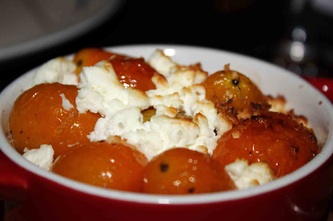

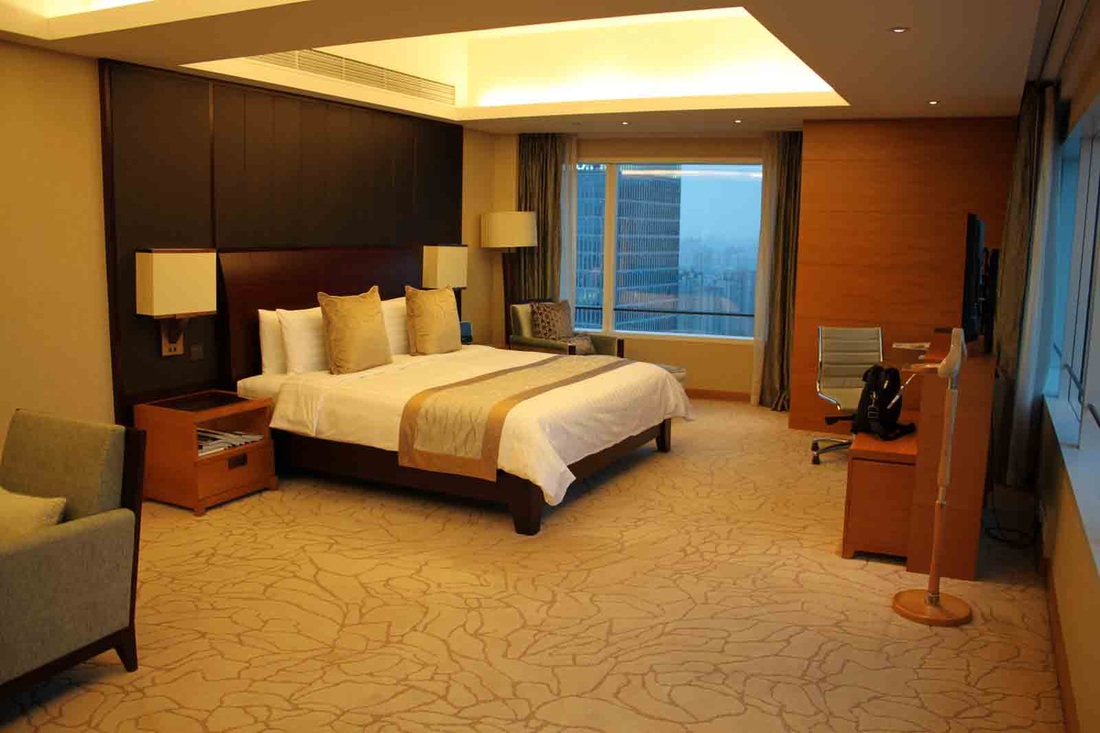


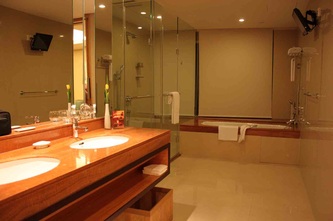
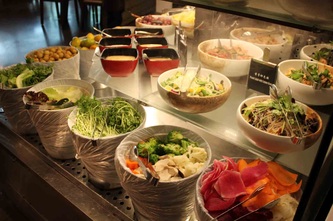
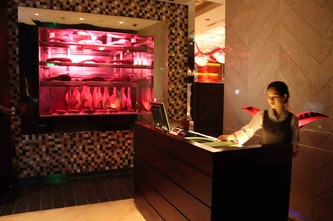





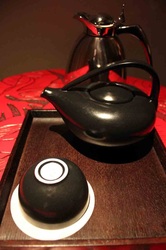
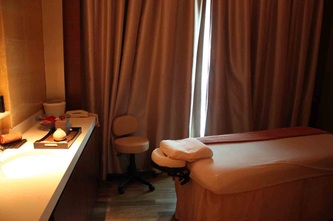













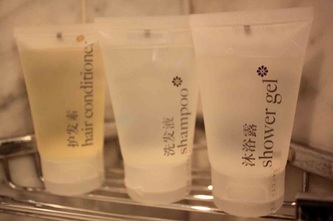





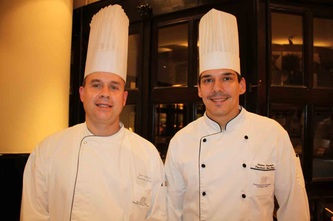
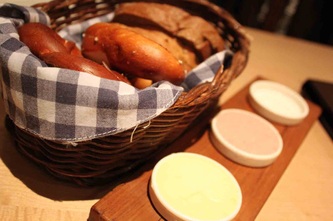









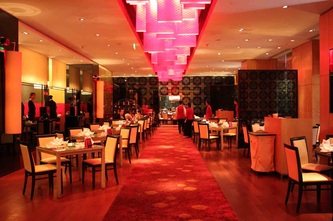





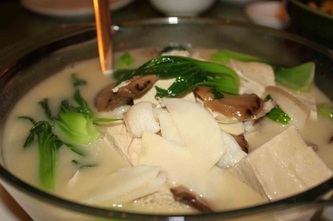



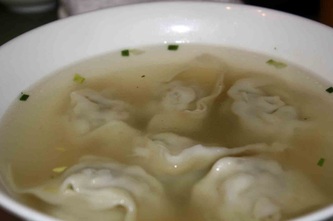



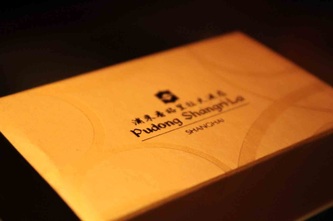

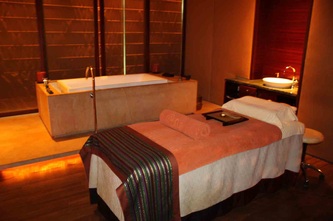











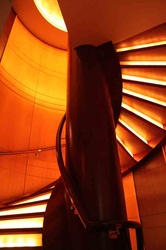
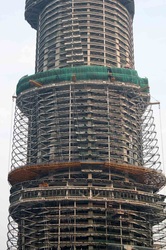
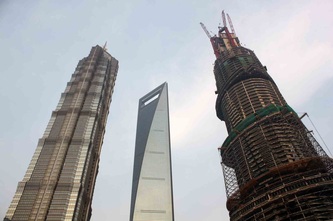




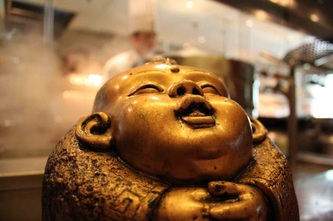






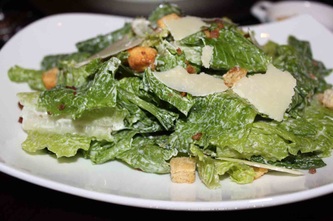



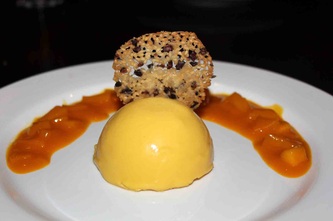






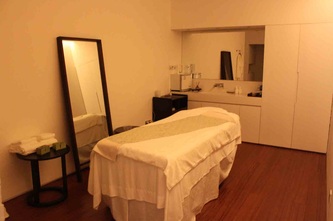

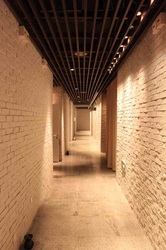


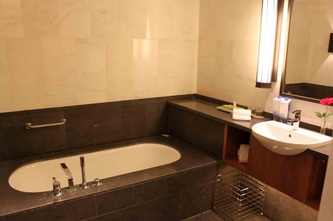




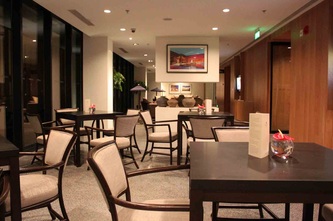








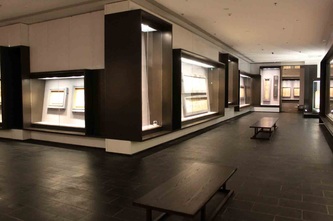




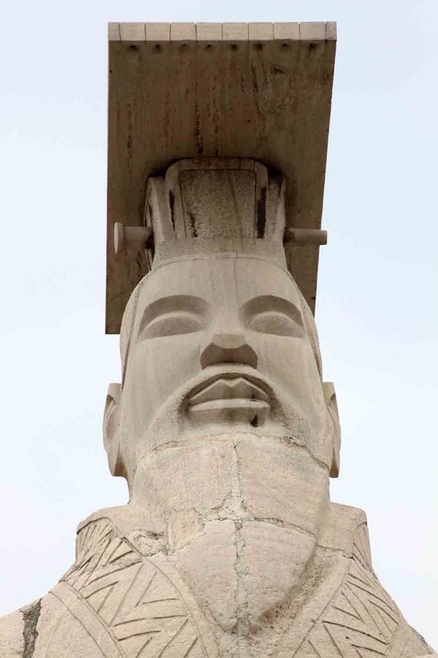










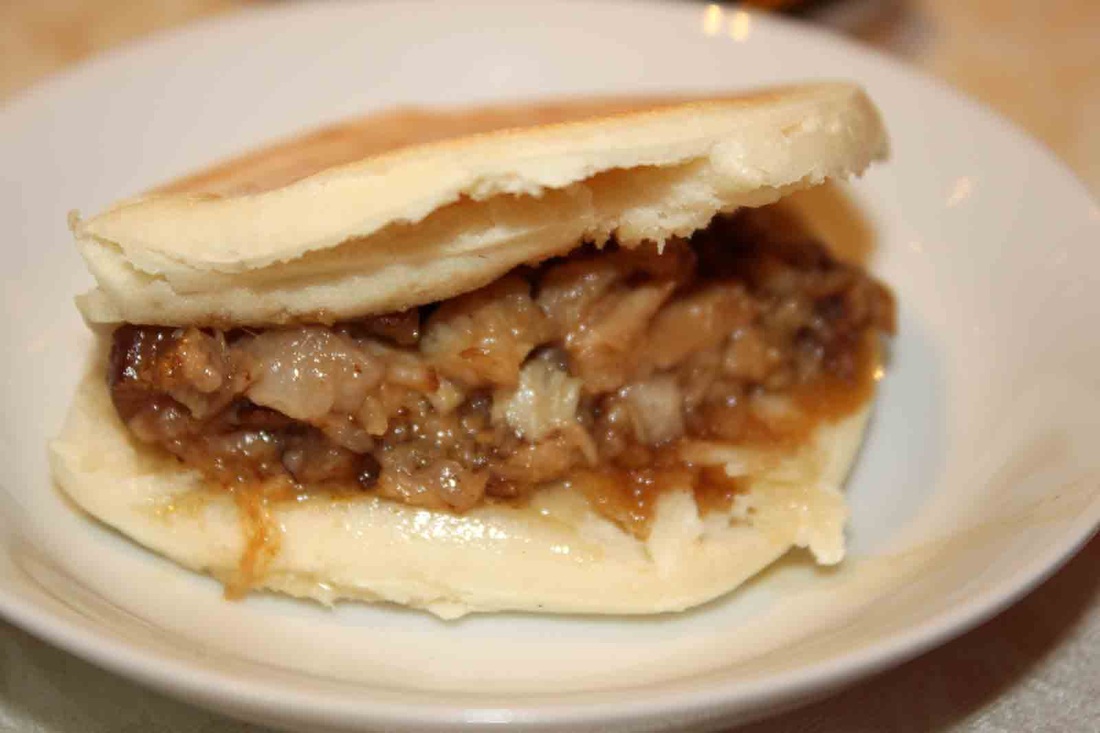









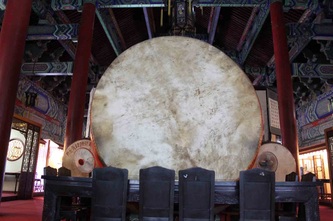
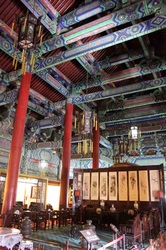

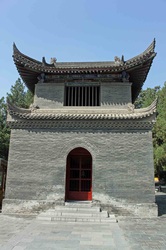







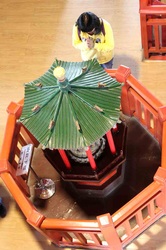






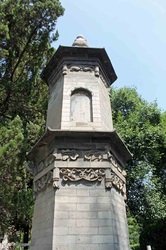

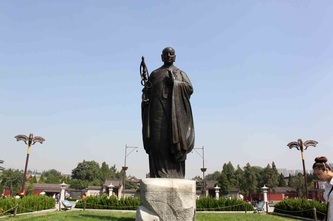



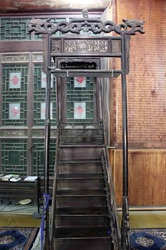







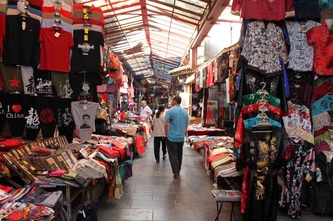



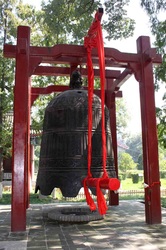
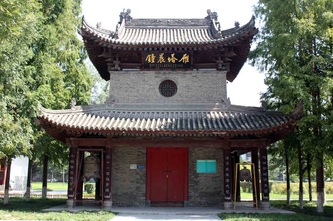
















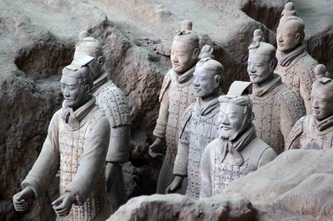

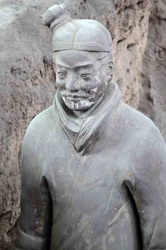








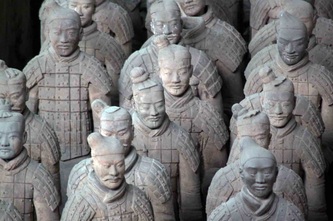
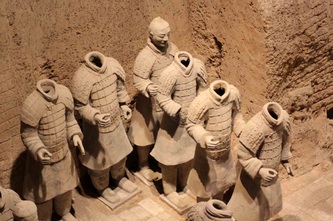


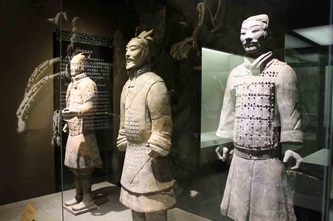








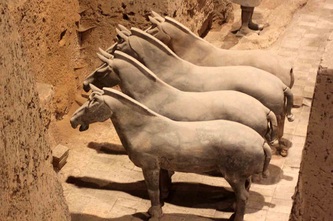





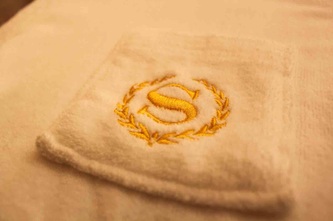












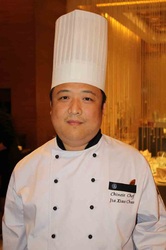


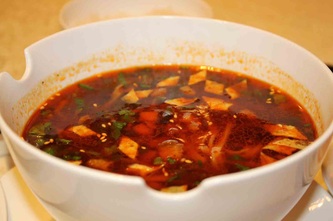












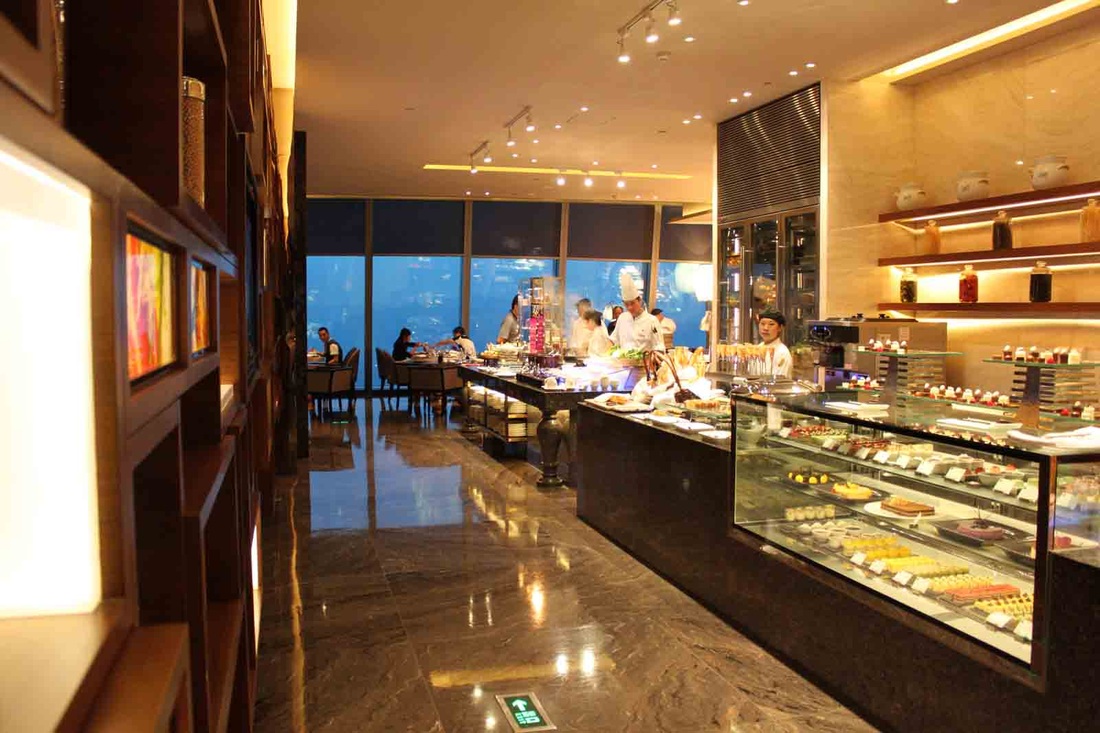
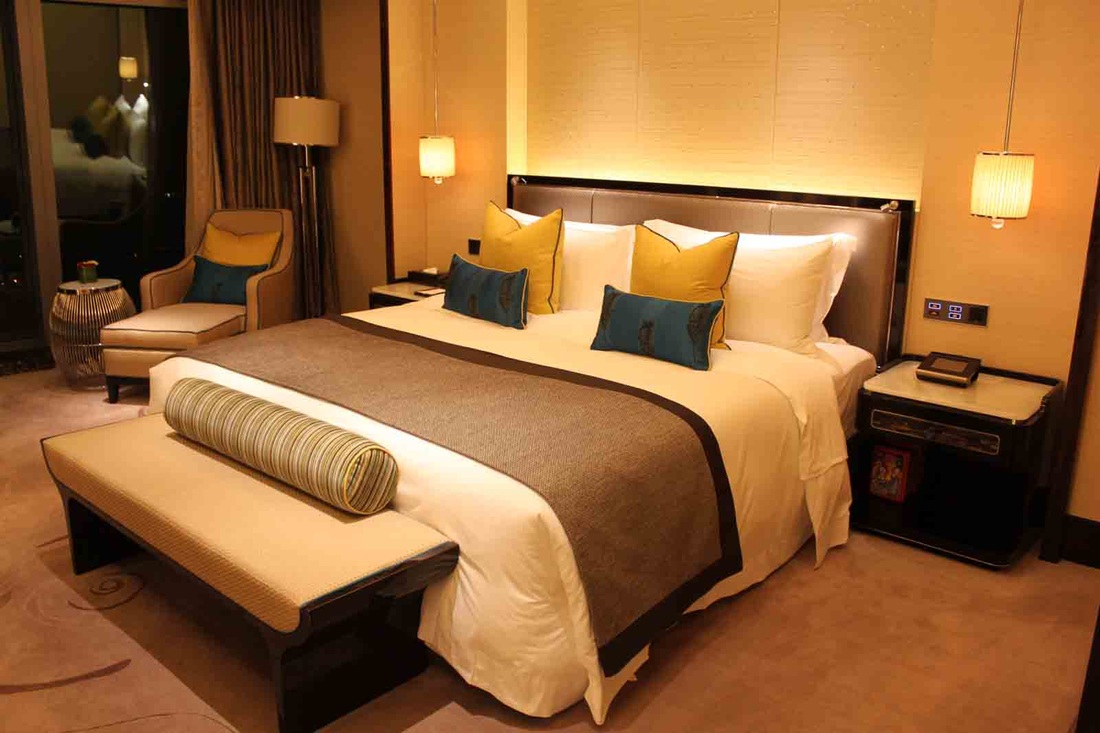


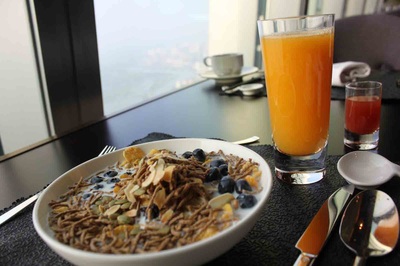




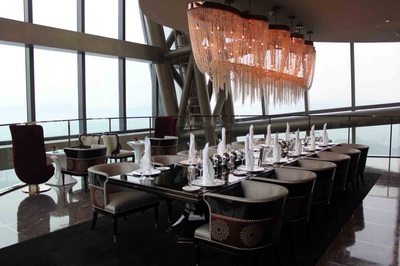



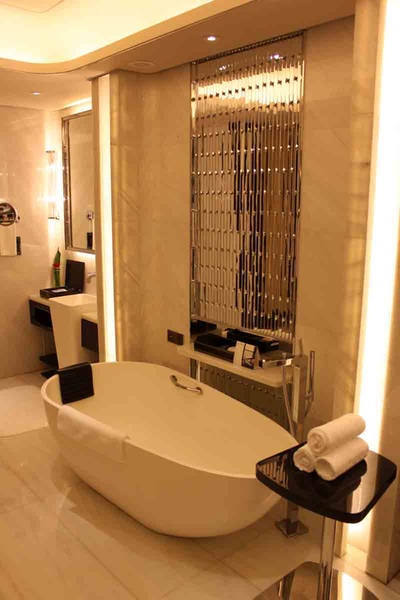
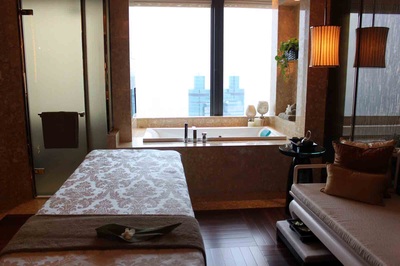

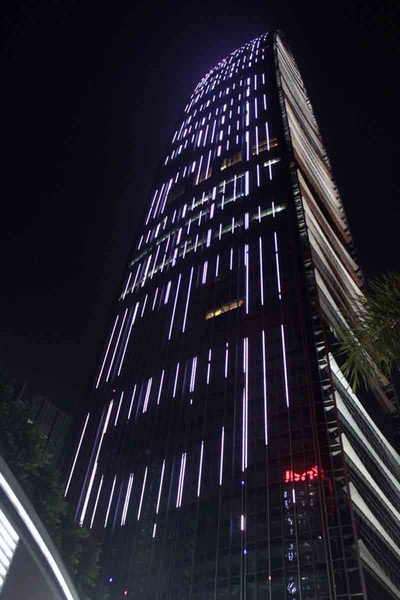


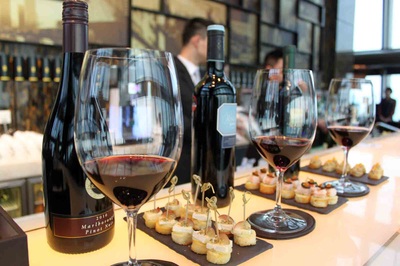





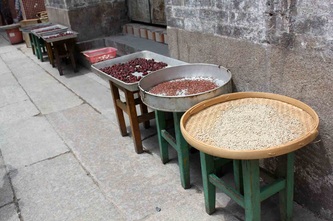





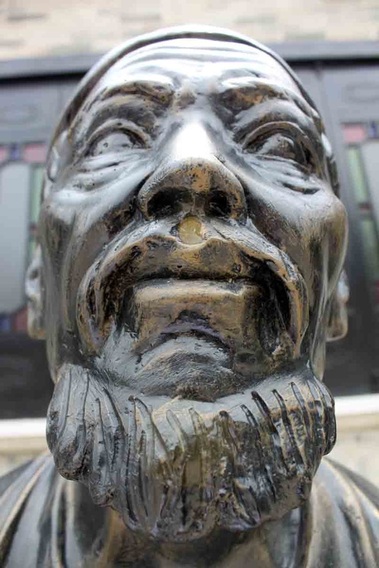
 RSS Feed
RSS Feed


